- Germany 2016, 1; Detmold
- Germany 2016, 2; Goslar and the road to Berlin
- Germany 2016, 3; Potsdam and Berlin
- Germany 2016, 4; Stölln and Luneberg
- Germany 2016, 5; Belsen and Hameln
- Germany 2016, 6; Herford and Home
Continued from part 1, Detmold
The point comes when one has to get the show on the road and this was the day to set off on my tour. A very slow start meant that I didn’t leave Mike’s until the early afternoon when I drove to Sennelager and took a couple of photos of the entrance to Athlone Barracks and the Ferret Scout Car outside the Guardroom. Due to the current security situation anything more was considered inadvisable.
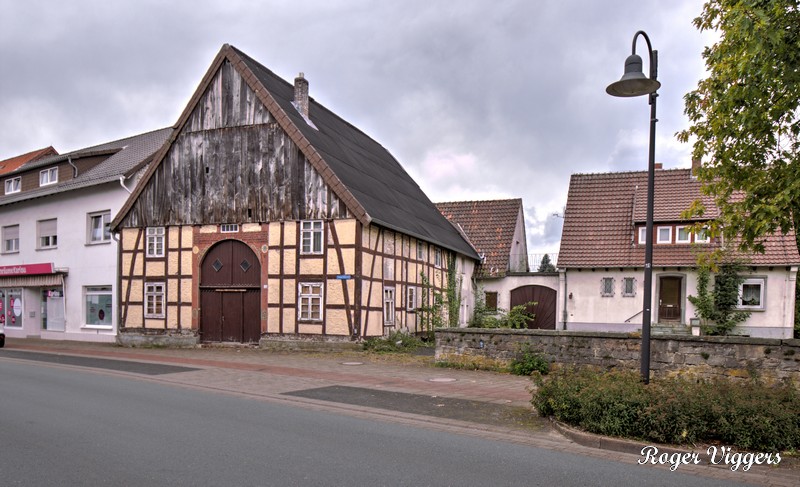
From there I mostly avoided major roads towards Goslar passing through Altenbeken which has a splendid railway viaduct.
In Neiheim, I stopped to take a few photos of the main street.
Then on through Marienmünster, Hoxter, Dassel, skirted round Bad Gandersheim on the bypass and stopped just short of Langelsheim for the night. In the morning I headed into Goslar in search of breakfast which I found at a nice little bakery on the corner of Mauerstrasse and Bäckerstrasse. Tasty rolls and coffee got me off to a good start.
I had a short drive around the eastern end of the town along some very picturesque (for which read “narrow and one way”) streets before heading to the main car park adjacent to the Kaiserpfalz and Hastings Barracks which was my reason for visiting the town.
At the outbreak of World War Two, the two regiments of the Household Cavalry, the Life Guards and the Royal Horse Guards (the Blues) were formed into two composite regiments, 1st and 2nd Household Cavalry Regiments.
At the end of hostilities, The Life Guards and the RHG were reformed and the former were based in Goslar, mainly at Hastings Barracks to the south-west of the town but with some squadrons dispersed to other locations on various duties. One of those locations was at the Arbeitsamt (the labour exchange) in the residential area towards the north of the town.
After taking photos of the barracks I took a walk into the town centre. Across the road from the main car park is a reminder of the Harz region’s mining history, a rail-borne coal tub used in mines to bring out the coal or ore from deep underground.
As one walks along Hoher Weg there are further reminders of Goslar’s long history as well as the ubiquitous souvenir shops, tea rooms and other establishments geared towards the needs of tourists.
Upon reaching the church I turned into Marktkirchhof and was confronted with a street full of pubs and restaurants all competing for the tourists Euros.
Preferring to sample local dishes and beers when possible the Goslar Brauhaus seemed most likely. It’s the brewery tap for the Goslar Brewery and had a good menu with a number of “Tipps”. One of these was Goslar fried pork with dark beer sauce, green beans with bacon bits and fried potatoes. A small dark beer relieved my thirst.
In one of the souvenir shops I’d noticed some items with witches on them. A lady in the tourist office told me about the local myths and traditions one of which is an annual event highlighting these old stories. The Brothers Grimm based many of their stories on these local tales.
I returned to the car park by a different route and was relieved to find public toilets adjacent to it. Access was down stairs. It seem to be widespread in Germany that one pays 50 cents to “spend a penny”. Where there is no machine to take one’s money upon entry there is a dish at the exit in to which one drops some cash. Those I used all had an attendant keeping the place clean and tidy and so I had no objection to contributing.
By the time I got to Wolfenbüttel the afternoon was pressing on so I limited my visit to the former Northampton Barracks where the regiment had a brief stay.
There is a plaque on the main gate which when translated reads:-
“Former barracks built 1935/6
1935/6 – 1945 Flak barracks of the German Wehrmacht
to 1992 accommodation for units of the British Army of the Rhine”
The site is now used by the Ostfalia University of Applied Sciences.
My next call was to be in Berlin so I set off eastwards. On the way I had to pass Helmstedt and decided to take a brief look at the town rather than continue on the bypass. It’s a very pleasant old town and would repay a much longer visit than the few minutes I spent driving through. In such a place it’s very easy to get confused about one’s direction and even with the sat-nav doing the work I missed a turn.
After leaving Helmstedt one crosses the site of the former internal German border (the Iron Curtain) and about half a mile further on is the town of Beendorf. Rounding a bend I noticed a memorial and stopped to investigate. The inscription translates as:-
“The murdered anti-fascists warn
—
Struggle against fascism and war”
The plate bottom right reads;
“Remember the suffering and sacrifice
of prisoners of Nazi concentration camp
Aussenlager A3 (Neuengamme)
in Beendorf”
It was only after returning home and looking for information that I discovered that there had been a Nazi labour camp nearby.
As I approached Magdeburg there were railway tracks alongside the road which piqued my interest. Checking the map showed that I would pass close to the Hauptbahnhof (the main railway station) and I decided to visit and have a look. As I got close I discovered the road was closed and went round in a circle trying to find an alternative route. A lengthy diversion took me to the other side of the railway where I discovered that approach was closed as well so I decided to continue east.
By this time I’d seen a number of trams running along the streets and as I drove along Julius-Bremer-Strasse I was stopped in a traffic queue and one passed across in front of me. As luck would have it I was alongside a parking place so I pulled over and went to explore.
To the south along Breiter Weg is a major tram stop and just south crosses Ernst-Reuter-Allee the junction at which entailed some major track work allowing trams to turn in all four directions.
Heading out of town there was considerable traffic from the afternoon’s football match and we were diverted around some obstruction.
A little to the east of Magdeburg is Königsborn which has a level crossing on the road junction with a signal box still in situ.
Daylight was now fading and shortly after passing through Nedlitz I found a place to spend the night in woodland.

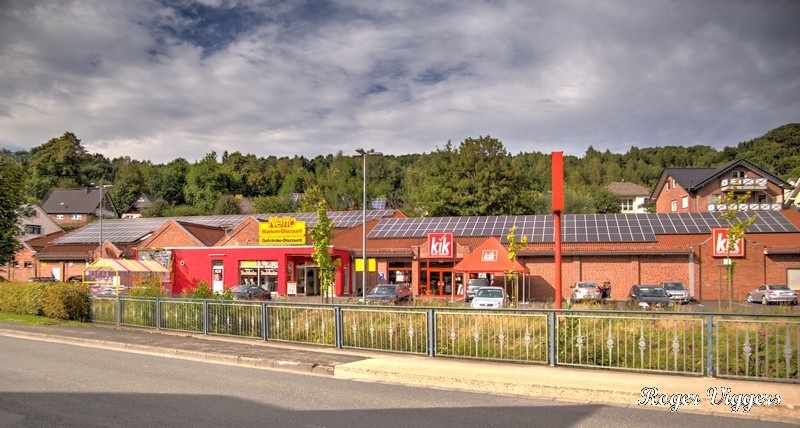


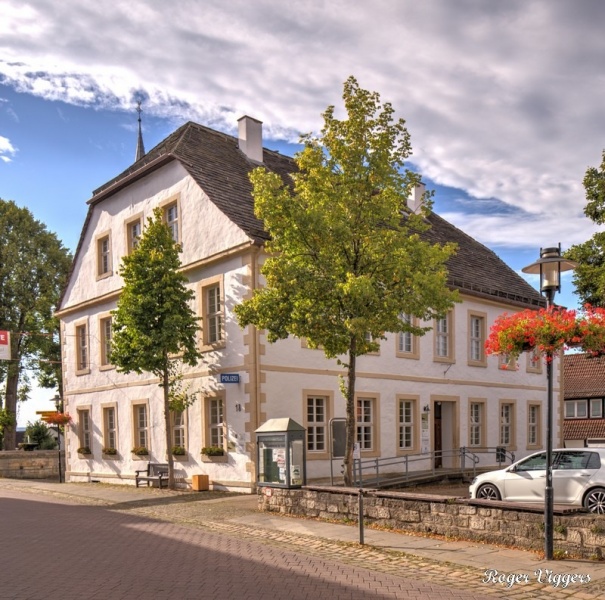
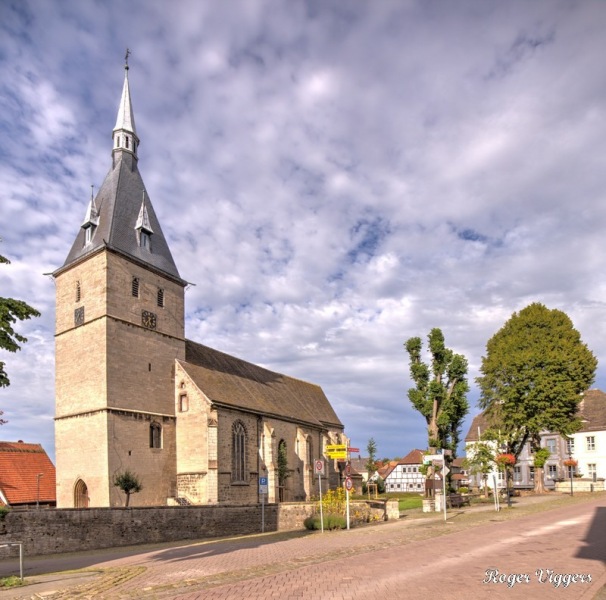








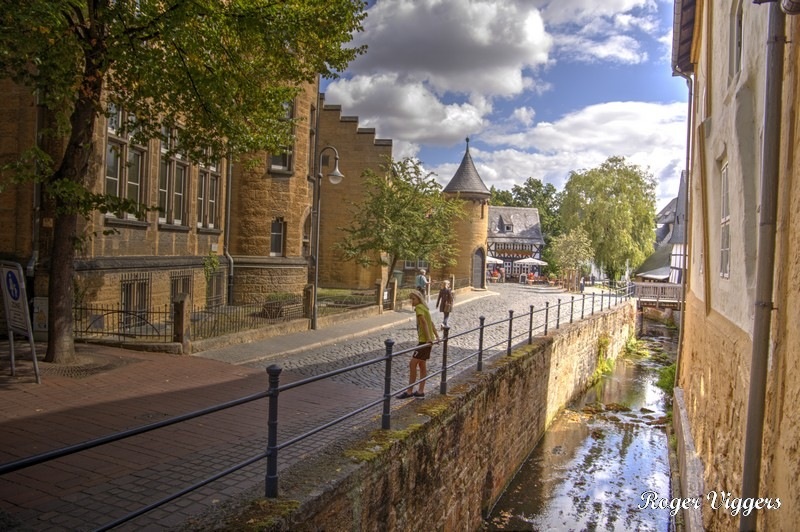




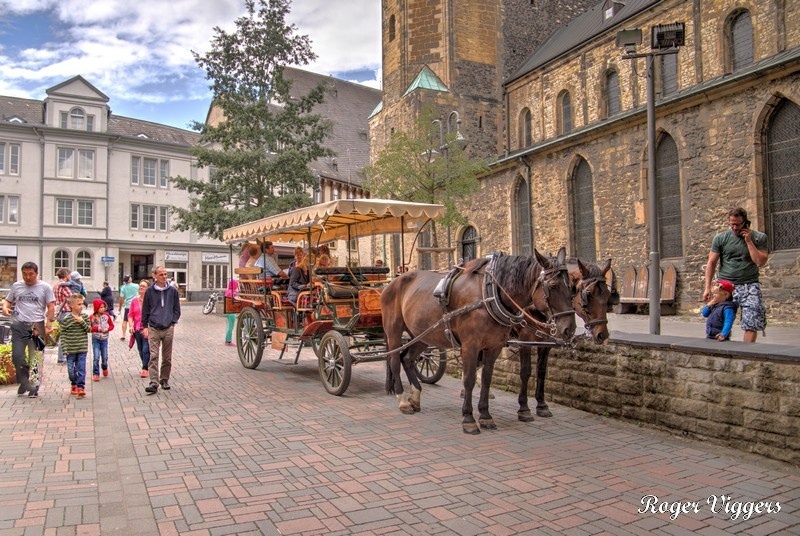

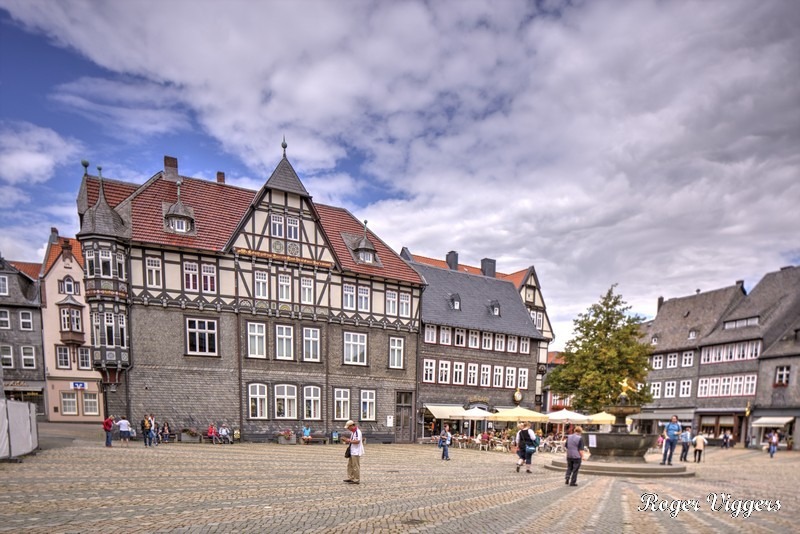


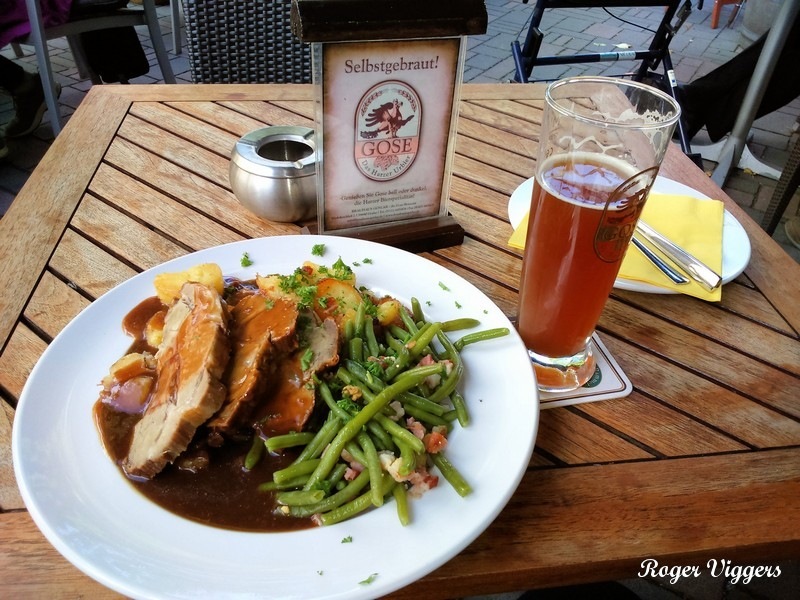

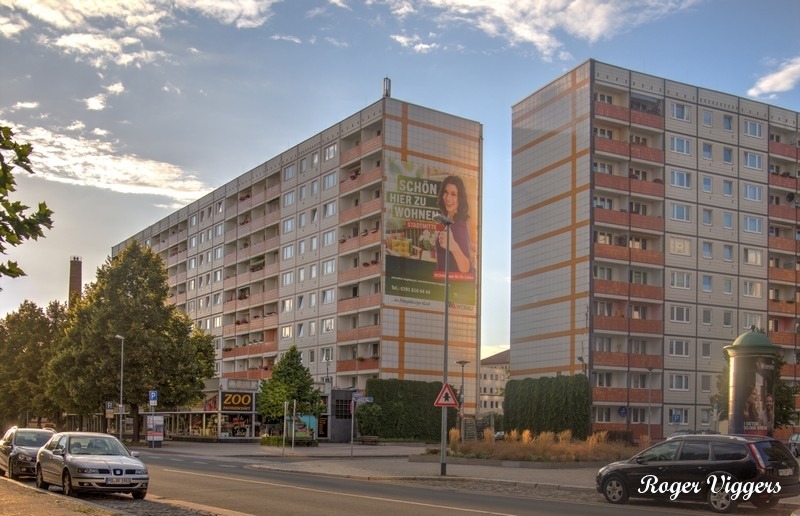

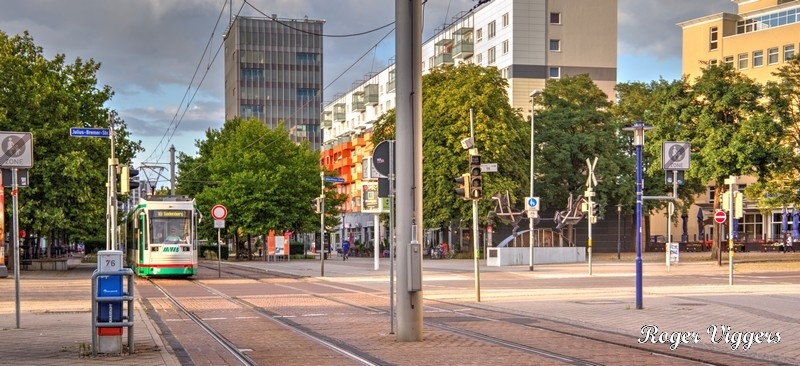



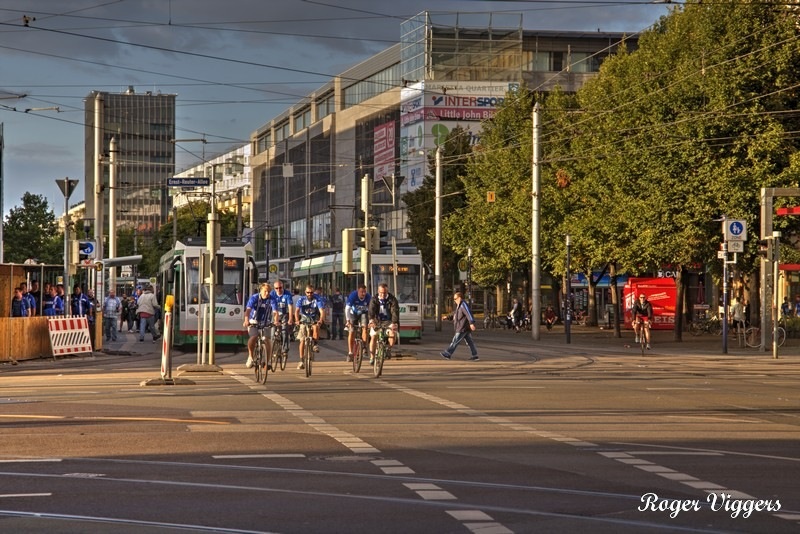

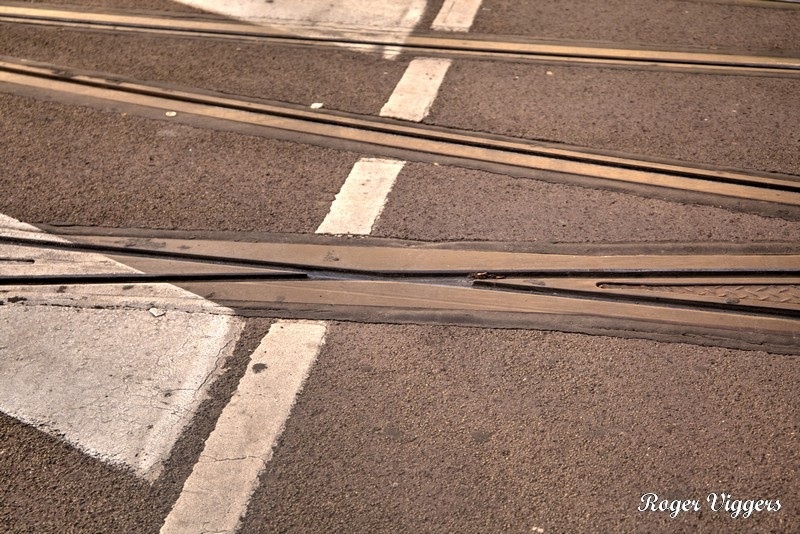

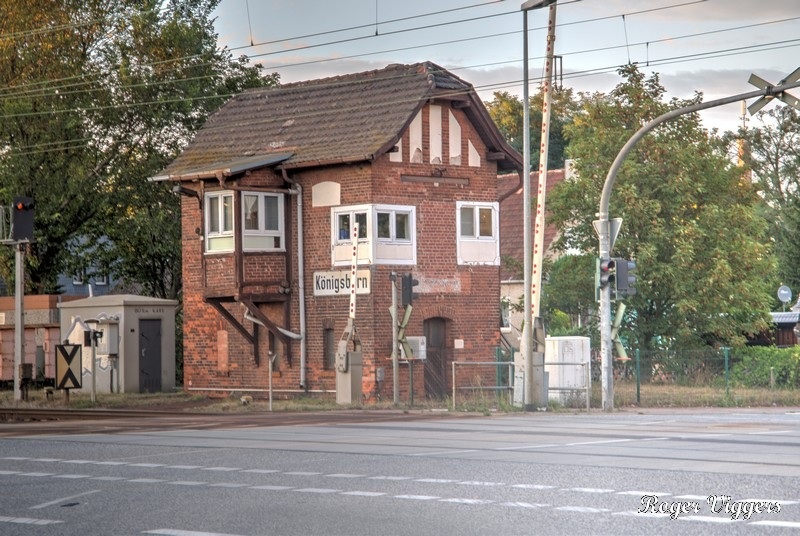



Leave a Reply